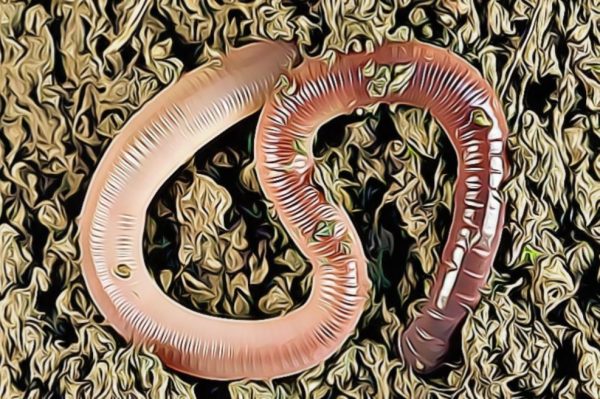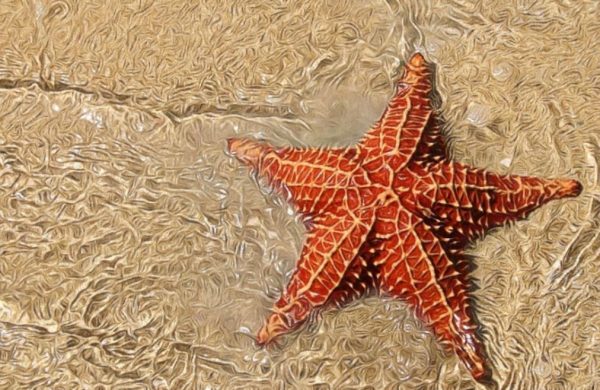10 characteristics of INVERTEBRATES
12 months ago
The invertebrates are the most abundant organisms on earth. They occupy almost all habitats, they can be found crawling, flying, swimming or floating. Invertebrates are animals without a backbone. These animals do not have an internal skeleton made of bone. They play a vital role in the earth's ecosystem.
Around the 95 percent of known organisms are invertebrates. Of the planets, it is estimated that between 15 and 30 million species, approximately 90% of animals are invertebrates. These come in many shapes and sizes and provide services that are vital to our survival.
The most common vertebrates include sponges, annelids, echinoderms, mollusks, and arthropods. Arthropods include insects, crustaceans, and arachnids.
Below are the details 10 characteristics of the most important invertebrates
- absence of spine
- They do not have cell walls and are all multicellular.
- They don't have lungs to breathe, most can breathe through their skin.
- As they do not have a bone skeleton, they are generally slow and small animals.
- The vast majority reproduce sexually, through male and female gametes.
- They are heterotrophs, or I know they cannot make their own food.
- Its body is divided into thorax, abdomen and head.
- They exist all over the world and in a variety of habitats.
- The vast majority have symmetrical bodies
- There are some who are sedentary, that is, they do not have the possibility of moving. For example the tube worms or feather duster worms, as they are commonly known.
The term invertebrates is a word composed of a prefix plus a word derived from the Latin 'Vertebra'. 'Vertebra' means joint in general, specifically it means 'the joint of the vertebral column of the vertebrate'. Along with the prefix "in" which means 'without', which means "those who lack vertebrae".
They are the most diverse group having around 12 million living species. Most of the animals on earth are invertebrates. They are cold-blooded animals; Their body temperature depends on the temperature of the atmosphere.
Continuing with the characteristics of invertebrates, it is important to remember that almost 95% of animal populations are invertebrates. Based on the International Union for Conservation of Nature at the time of 2009, more than 1.3 million invertebrates were identified. Invertebrates represent about 75% of the recognized species on the planet.
Although the actual number of invertebrates is unknown, there are various predictions that there may be tens of millions of invertebrates, the majority being insects. New species of invertebrates are being discovered regularly, another worrying fact is that there is not enough information about these organisms, invertebrates could become extinct and scientists would never know they existed.
example of invertebrate animals
amoebas
Amoebas are single-celled organisms that are part of the simplest group of invertebrates. They have a cell membrane, DNA, a nucleus, and organelles like most cells in the human body. The difference is that amoebas can move using their pseudopodia, or "false feet." They also use pseudopodia to catch and eat food. Beneficial amoebas are found in the soil, where they help regulate bacterial populations and recycle nutrients. There are several species of amoeba that cause disease, such as Entameba histolitica, which causes diarrhea.
Earthworms
Earthworms, also called angle worms, are very important in the world because their burrow turns and aerates the soil, provides drainage to the soil, and mixes with organic material. They are one of more than 1,800 species of worms that live on earth. Earthworms eat pieces of plants and animals in the soil. Worm bodies are divided into segments; in certain species some of the organs are duplicated in each segment. Earthworms can detect light and vibrations, but they are blind and cannot hear. Birds and other animals use earthworms as a food source.
Starfish
Starfish are also called sea stars because of the arms or "rays" they have protruding from their bodies. Some starfish live deep in the oceans, while others live on the coast. There are more than 1,600 species of starfish. Most have five arms, but one species is known to have 24 arms. Starfish have tube feet that are powered by hydraulic pressure to help them move. Snails, mussels, and clams are common foods for starfish, which use their arms to guide food particles from the water to their mouths. These organisms have the unique ability to lose and regrow their arms.
squid
Squids are decapods, which means they have 10 arms, or tentacles. They are different from octopuses, which have eight arms. Each tentacle has four rows of suckers that help them catch prey (usually fish) and attach to surfaces. Squid live in the ocean, both near the coast and in the depths of the ocean. Their length ranges from about 3/4 inch to over 65 feet. Some squids are luminous, meaning they have light organs in their skin that allow them to change color for camouflage, attract prey, and communicate with other squids. Humans, some fish, and sperm whales eat squid.
spiders
Spiders make their home on every continent except Antarctica. They are not insects because they have eight legs (insects have six legs). Experts believe that there are about 170,000 species of spiders in the world, but only about 39,000 are described and named. Some spiders live on land and some live in water. The leg span of the species ranges from 0.02 to 10 inches. Most spiders have eight eyes, and they can sense light and dark. They are also very sensitive to vibrations, which comes in handy when prey gets stuck in their web. Some spiders inject venom into their prey to kill it, while others prefer to wrap their catch alive and save it for later. Spiders can only ingest liquids; They poke holes in their prey and inject tissue-dissolving enzymes so they can be sucked up.
📂 Citar artículo
ENCICLOPEDIA DE CARACTERÍSTICAS (2024) 10 characteristics of INVERTEBRATES, en 10caracteristicas.com. https://10caracteristicas.com/en/10-characteristics-of-invertebrates/ (Consultado el: 20-05-2024)
🌐 Enlazar artículo
📌 Enlace corto a esta página:
https://10caracteristicas.com/?p=2326
📑 Impresión del artículo
Imprimir publicación
¿Quieres leer más artículos similares a: 10 characteristics of INVERTEBRATES (Actualizado 2024)? Puedes visitar la categoría Pets and animals para ver más contenido relacionado.





